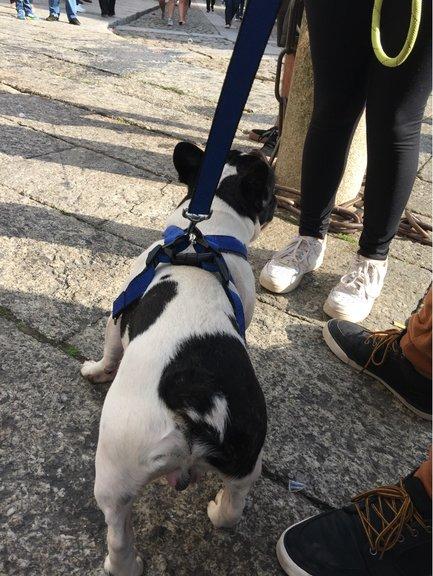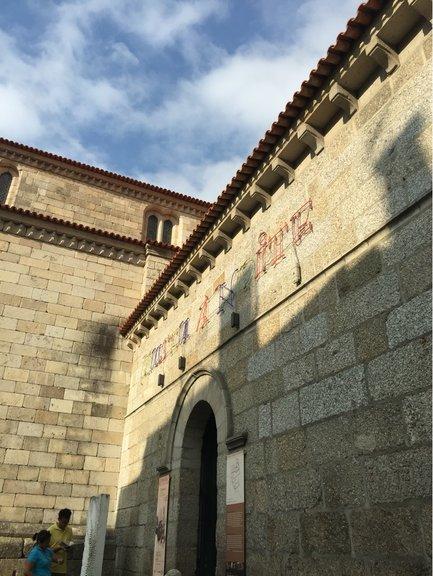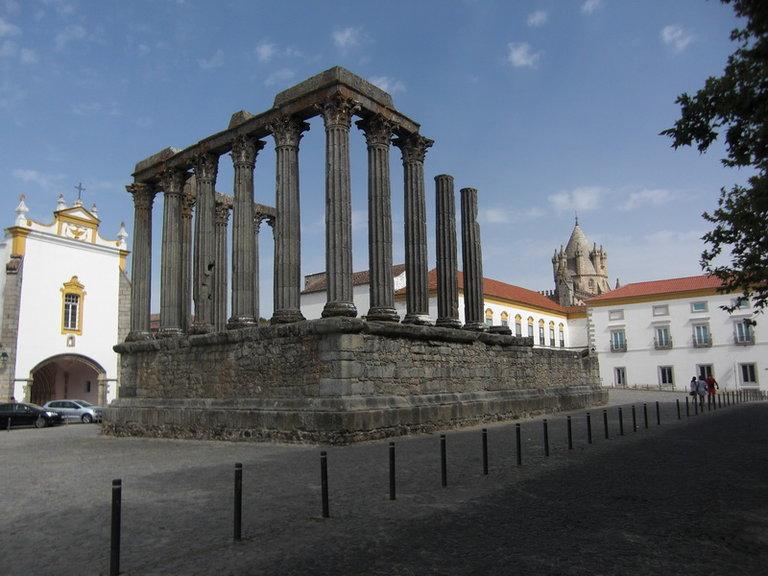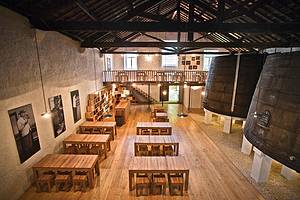Itinerary | 7-Day North to South Portugal Self-Drive Tour
11 cities |
22 attraction(s) |
total distance 864
km
 TIPS
TIPS
Day1
Day2
Day3
Day4
Day5
Day6
Day7
Day1: Porto
4 attraction(s) ·
5 km
1
The Porto Cathedral is an important Gothic building, hailed as one of the most luxurious churches in Europe. Its interior decoration is stunning, with beams, columns, and carvings covered in 400 kilograms of gold. Even the parts that are not adorned with gold, such as the wide ribbed Gothic arches, are made of expensive marble materials. In addition, the "Tree of Jesse" inside the church can be traced back to 1718 according to records. The underground museum houses a large collection of historically significant monastery treasures and was designated a national monument in 1910. Although the cathedral is no longer used as a religious site, classical music concerts are often held here. Even if you are not a believer, it is worth experiencing this special cathedral and marveling at its true splendor and exquisite craftsmanship.
2
km
2
Torre Dos Clérigos
The Clérigos Tower is a landmark building in the center of Porto. With its height, it is easily recognizable and can be seen from various angles in the old town. It was built in 1763 and was the tallest building in the country at that time. Ships arriving in Porto considered it a lighthouse and a symbol of the city. If you want to enjoy the breathtaking views of the old town, be prepared to climb 240 steps to the top of the tower, where you can have a 360-degree panoramic view of the city center. It is definitely worth it! The tower is part of the Clérigos Church, a typical 18th-century Baroque church commissioned by the charitable organization "Irmandade dos Clérigos Pobres" and designed by Italian architect Nicolau Nasoni. The facade of the church is exquisite, with unique features such as the intentionally broken triangular pediment on the top floor and the carved garlands, shells, and the colorful marble altar inside the church. The tower also used to house a hospital, reflecting the charitable nature of spreading God's love. The designer, Nicolau Nasoni, didn't receive any payment at the time and only received a symbolic amount many years later.
2
km
3
Ponte Dom Luísi
Porto has many beautiful bridges, among which the most noteworthy is the Dom Luís I Bridge. This double-deck iron bridge, connecting Gaia and the old town of Porto, was designed by the famous designer Eiffel's apprentice, Teófilo Seyrig. The bridge is over 70 meters high, spans 395 meters, and is 8 meters wide. The upper level of the bridge is for the metro D line, while the lower level is for vehicle traffic, making it one of the iron bridges with the largest span. Overlooking the beautiful scenery on both sides from the iron bridge is a fantastic experience, but if you have acrophobia, you should be careful. Taking a boat on the Douro River is one of the best ways to appreciate all the bridges in Porto. Another famous iron bridge is the Dom Maria Pia Bridge, named after the wife of Dom Luís I, and it was a work of Eiffel before designing the Paris Iron Tower. The bridge was completed in 1876 and was in use until 1991, and today it has become a national monument.
2
km
4
The University of Porto (Universidade do Porto) is a university located in Porto, Portugal. It was established on March 22, 1911, by the Provisional Government of the Republic. It is currently one of the largest educational institutions in Portugal. The university was formed in the 19th century through the merger of the Polytechnic Academy (Academia Politécnica) and the Medical-Surgical School (Escola Médico-Cirúrgica).
Day2: Guimaraes
3 attraction(s) ·
3 km
1
2
km
2
Guimarães Castle is a typical medieval castle located in the ancient city of Guimarães in northern Portugal. It was built in the 10th century to protect the Palace of Braganza and the surrounding monks from the invasions of the Normans and the Moors.
1
km
3
Located in the central area of Guimarães, it bears the famous inscription "Portugal nasceu aqui" (Portugal was born here).
Day3: Guimaraes > Aveiro
2 attraction(s) ·
125 km
1
Guimarães, located in the Braga District in northern Portugal, was founded in the 4th century and served as the capital of Portugal in the 12th century. Alfonso Henriques, born in this small city, established the Kingdom of Portugal and made Guimarães its capital in 1143. It is known as the "Cradle of Portugal." Due to its romantic and rich cultural heritage, Guimarães has been granted the title of World Heritage Site by UNESCO. It was also chosen as the European Capital of Culture in 2012.
125
km
2
Museu de Aveiro (Sta. Joana)
This museum located in the city center displays portraits from the 17th century, mainly introducing the life of Princess Santa Joana of Portugal. Although not large, the visit takes about 1 hour.
Day4: Aveiro > Coimbra > Tomar > Obidos
4 attraction(s) ·
260 km
1
Aviero's ancient train station, a traditional Portuguese station, adorned with blue and white porcelain, is exceptionally beautiful.
69
km
2
The University of Coimbra has a long history dating back to 1290. Its campus is characterized by majestic and grand buildings, including a magnificent library with beautifully arranged corridors and a Manueline chapel built in 1517.
88
km
3
The Convent of Christ in Tomar, located in the Santarém District of western Portugal, is a Catholic church building dating back to the 12th century. Originally the headquarters of the Knights Templar, it symbolizes the order's conquests. After the dissolution of the Knights Templar in the 14th century, this branch in Portugal became affiliated with the Catholic Church and supported Portugal's Age of Discovery in the 15th century. The Convent of Christ in Tomar combines Romanesque, Gothic, Manueline, and Renaissance architectural styles. It is one of Portugal's most important historical and cultural buildings and was designated a UNESCO World Heritage site in 1983.
104
km
4
Obidos Castle
Obidos Castle is one of the seven wonders of Portugal. The castle was built in the 12th century and combines various architectural styles. Since 1951, it has been a member of the Pousada Castle Hotels of Portugal. You can walk along the walls of the castle and enjoy a panoramic view of this beautiful white town.
Day5: Lisbon
3 attraction(s) ·
13 km
1
Jerónimos Monastery is a magnificent building that took 100 years to complete during the golden age of Portugal. It is considered the most splendid and grand monastery in Portugal. King Manuel I officially began its construction in 1501, allocating a significant portion, equivalent to 5% of the revenue from Asian-African trade each year, which was around 70 kilograms of gold. The monastery was built using a Portuguese special stone called "golden limestone" and features an astonishing facade that stretches over 300 meters long. It combines Gothic and Renaissance styles perfectly and is regarded as a "treasure" of Manueline architecture, unique and impossible to replicate in history. It held significant religious and political importance at the time, dedicated to the Virgin of Bethlehem and the ancestors of the Manueline dynasty. Many historically important figures, such as the renowned Portuguese poet Camões, are buried there. Furthermore, due to its location near the seaport of the Portuguese capital, it is considered a symbol of Portugal. Notably, the historic signing of the Lisbon Treaty, a milestone in the history of European Union development, took place here in 2007. Along with the Belém Tower, it is recognized as a UNESCO World Heritage Site and one of the seven wonders of Portugal. There are many more stories about the monastery, including the devastating earthquake of 1755, which destroyed the ancient city of Lisbon. As the earthquake occurred on a Sunday morning, many worshippers perished in the churches during mass, but miraculously, the entire royal family who were praying at the monastery remained unharmed, adding a more sacred aura to this already significant monastery.
3
km
2
Belém Tower (English: Belém Tower, Portuguese: Torre de Belém) is a five-story defensive structure located in the Belém district of Lisbon, Portugal. It was built between 1514 and 1520 during the reign of King Manuel I to defend the port in Belém and the nearby Jerónimos Monastery. The tower is dedicated to the patron saint of Lisbon, St. Vincent. Over time, it has served as a customs house, a telegraph station, a lighthouse, and also marked the starting point for explorers. During the Spanish rule, it was used to imprison important political prisoners. The tower features a gloomy dungeon converted from a warehouse, and it currently houses 16th-century cannons and other artifacts. In 1983, it was officially recognized as a UNESCO World Heritage site and in 2007, it was named one of the Seven Wonders of Portugal. Belém Tower is divided into two parts: the tower body with four arched rooms and the bulwark with numerous gun emplacements. Crossing the drawbridge and passing through the main gate leads to the interior of the bulwark. There are 16 gun positions on the walls for mounting cannons to defend against enemies. The central part of the floor is raised while the edges are lower, allowing for the protection of the cannons and quick draining of water. The roof features a Gothic-style rectangular skylight for ventilation to disperse the smoke from firing cannons. Beneath the bulwark's floor, there are storage rooms, with the largest one accessible from the northern staircase. Initially used for storing supplies, these rooms later became dungeons. On the right side of the entrance, a steep staircase leads to the platform on top of the bulwark. The polygonal platform has six sentry boxes on its corners, each with an observation window and a pepper pot-shaped roof. In the center of the platform, there is a railing surrounding the courtyard below. To the south of the railing, there is a statue of Our Lady of Good Success, also known as the Grape Virgin. The tower faces south, and the entrance is located on the platform of the bulwark. The south facade of the tower is adorned with exquisite stone carvings. The balcony on the second floor features decorative friezes and railings, with a large Royal Shield of King Manuel I above it. This front side, adorned with royal symbols and Manueline elements, received praise from travelers and sailors of the 16th century. Ascending the staircase along the right side leads to the first room inside the tower, known as the Captain's Room. There is an octagonal opening in the floor used as a water tank for collecting rainwater. The ceiling of the room is coated with lime. Entrances to the sentry boxes are found at the northeast and northwest corners. On the left side, there is a spiral staircase that leads to the upper rooms. The name of the room possibly originates from its previous use as the captain's office. In 1521, Gaspar de Paiva worked and exercised administrative and judicial powers here. Going up the spiral staircase leads to the second room, known as the King's Room. This room opens to a balcony on the south side, with eight circular holes in the floor for defenders to drop stones and boiling oil. The room above is called the Audience Room, which has two large windows and a fireplace between them. The topmost room is known as the Chapel, featuring a fan-shaped vaulted ceiling decorated with Manueline symbols. Overall, this room is quite simple in design.
11
km
3
The Modern Art Center is located in a sculpture-adorned garden and houses a collection of 20th-century Portuguese art treasures.
Day6: Sintra > Evora
3 attraction(s) ·
170 km
1
Cape Roca is a cape in Portugal, adjacent to the Atlantic Ocean. It is a narrow cliff with an elevation of about 140 meters, located at the western end of the Sintra Mountains. It is situated at 38 degrees 47 minutes north latitude and 9 degrees 30 minutes west longitude, approximately 40 kilometers from Lisbon. Cape Roca is the westernmost point of Portugal and the westernmost point of the entire Eurasian continent. A lighthouse and a cross facing the ocean have been built on the cliffs of Cape Roca. The monument is inscribed with the famous Portuguese phrase "Land ends here, sea begins" (Onde a terra a caba e o mar começa). Cape Roca has been rated as one of the "50 places in the world worth visiting" by netizens.
16
km
2
Pena Palace (Portuguese: Palácio Nacional da Pena) is a royal palace that showcases a dazzling, peculiar, and ornate appearance resembling a paradise-like castle. The palace itself is a fusion of various architectural styles, including Gothic, Renaissance, Moorish, and Manueline (a Portuguese architectural style during the reign of King Manuel I), representing the creative efforts of Ferdinand of Saxe-Coburg-Gotha, the husband of Queen Maria II of Portugal in the 19th century. It is not only a national monument in Portugal but also one of the Seven Wonders of Portugal. It is located on the hilltop of São Pedro de Penaferrim in Sintra, near Lisbon, and offers a clear view of the city on a sunny day. In 1995, it was designated as a UNESCO World Heritage Site as part of the Cultural Landscape of Sintra. Currently, it is frequently used for official activities by the President of Portugal and other government officials. In the medieval period, it was merely a small chapel dedicated to the Virgin Mary. In 1493, King João II and his wife visited the site as pilgrims, and later, King Manuel I built a monastery there. However, the monastery was destroyed during the Lisbon earthquake in 1755. From 1842 to 1854, significant efforts were made to construct the royal summer palace, which was eventually completed in 1885 by the German architect Baron von Eschwege.
155
km
3
The Iberian Peninsula preserves the best-preserved Roman temple, which is a very important archaeological site in the city.
Day7: Evora > Faro > Lagos
3 attraction(s) ·
292 km
1
The University of Évora was founded in 1559 and granted university status by Pope Paul IV in the same year. It was closed in 1779. As the second oldest university in Portugal, it reopened for admissions in 1973.
229
km
2
Falur Beach is located 6 kilometers southwest of the city, stretching for several kilometers, and is one of the best natural beaches in Europe. If you participate in the "Ladies' Night" event here, you may be invited to dance by beach girls. The extension of the beach is located on Ilha do Cabo de Santa Maria, the southernmost point of mainland Portugal, often referred to as the "Deserted Island."
63
km
3
Benagil Beach Sea Cave is a breathtaking beach attraction. The circular opening in the cave's ceiling allows sunlight to enter, illuminating the soft sand inside. The calm and warm seawater is perfect for swimming.







































